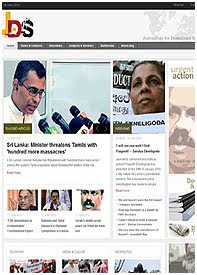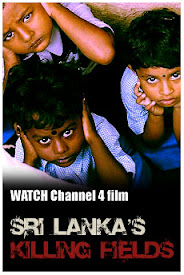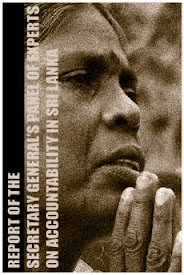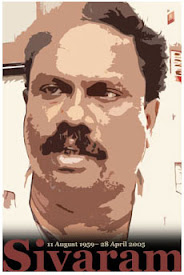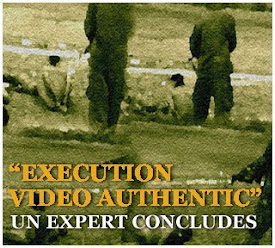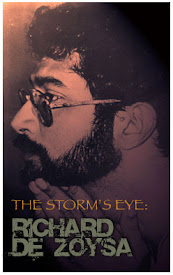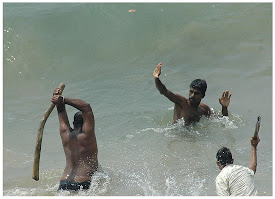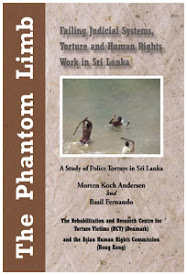
Photo Courtesy of http://indi.ca/
- For journalists in South Asian countries, particularly the conflict-ridden, terror-prone areas of Afghanistan, India, Pakistan, and Sri Lanka, 2009 was one more year of murderous attacks by state and non-state players. Twelve journalists lost their lives during the period, with Pakistan accounting for seven of them.
In addition to this information, the annual report, “South Asia Media Monitor, 2009,” of the South Asia Media Commission (SAMC) reveals that during the year hyper-commercialisation, monopolisation, and excessive political clout chipped away at professional and ethical norms, most disturbingly in India and Pakistan.
“The situation for the functioning of a free media rapidly deteriorated as vested interests outmanoeuvred editorial controls,” the report commented without any exaggeration, adding: “Confronting the fallout of the global economic downturn, media outlets that have had a buoyant growth in recent years laid off hundreds of their staff deflating professional morale in the region where physical threats abound.”
The 180-page report highlights events involving high-risk duties, casualties, threats, and intimidation in the eight South Asian countries — Afghanistan, Bangladesh, Bhutan, India, Maldives, Nepal, Sri Lanka, and Pakistan. On top of Pakistan’s seven, the deaths reported were two in Afghanistan, and one each in India, Sri Lanka, and Nepal. The report finds fault with state authorities for failing to bring to justice the killers of the journalists.
“India is far from a safe haven for journalists”
Aside from calling attention to the increase in the incidents of violence against mediapersons, the SAMC report gets into the ongoing debate in India on the ethics of news coverage (“paid news” and “selling news space”) in the print and broadcast media. The deplorable phenomenon of “paid news” and “selling news space” has emerged as a great threat not only to media freedom but also to fair, free, and democratic elections. The report comments on the paradox that the world’s largest democracy enjoys a freer and more sophisticated press than do many of its neighbours — and “yet India is far from a safe haven for journalists.” The violence unleashed on TV channels, the assaults on several respected journalists, and the brutal murder of Anil Majumdar, Editor, Aji , who was campaigning for peace talks between the government and the United Liberation Front of Asom (ULFA), raise disturbing questions about the state of freedom of the media and the safety of journalists, especially critical and crusading journalists.
Even though the number of journalists killed in the region (12) in 2009 was significantly lower than in the previous year (22), the incidents of violence against them registered a steep rise, worsening the situation on the ground in Pakistan, Sri Lanka, and Afghanistan. In Pakistan, the SAMC report observes, “some zealots in the profession have used their new freedoms to scandalise and destabilise a fragile democracy, ignoring media norms quite frequently.” Further, some leaders of the ruling party used threatening language against some mediapersons. The year 2009 began with the detention of a journalist (on January 3). The very next day, a cameraman of a television channel and a freelance journalist fell victim to a gas cylinder blast in a suicide attack. Three weeks later Amir Wakeel, editor of a newspaper, was shot dead in Rawalpindi. Four more journalists lost their lives in the following months. The SAMC report observes that the ongoing conflict in the frontier regions of Pakistan and Afghanistan and the surge of terrorism brought tremendous pressure on journalists, making the task of reporting the truth “a hazardous affair.”
“Sri Lankan journalists suffered the most”
Although Pakistan accounted for seven of the 12 journalists killed last year in five of the eight south Asian countries under study, it was journalists working at great risk under extremely hostile conditions in battle-torn Sri Lanka who suffered the worst adversities in the region by all standards, according to the report. In the commission’s view their sufferings were “more serious than even the travails that their counterparts in Pakistan have faced.” The brutal murder of Lasantha Wickrematunga, one of the island nation’s widely known editors, the “abduction-style arrest” of N. Vithyatharan, and the 20-year jail term imposed on J.S. Tissainayagam, a pro-LTTE journalist, on charges of “terrorism” represent a new low. The report asserts: “Many top journalists had to flee the country fearing for their life.”
Wickrematunga, Editor, Sunday Leader, who was known for his strong views against the government, was shot dead on January 8, 2009. “The fearless editor was known for his courage and forthrightness in speaking truth to power,” the SAMC report says. Besides exposing “the corruption, nepotism, racism and bad governance of the government,” the newspaper was also “critical of the government’s warmongering”; it advocated “a negotiated settlement to the ethnic crisis.” Natesapillai Vithyatharan, editor of “ Sudar Oli,” was arrested and interrogated for long hours for alleged links with the Liberation Tigers of Tamil Eelam. Many other employees of the newspaper and its allied publications received death threats. Even more shocking was a court order that convicted Tissainayagam (on August 31) on charges of “supporting terrorism and inciting racial hatred in his articles” and sentencing him to a 20-year jail term. He was the first Sri Lankan journalist to be convicted under the anti-terrorism law. The verdict sent shock waves across the region and journalists and human rights organisations were highly critical of the sentence. “The verdict is a big blow to freedom of the press in the whole South Asian region,” said SAMC Chairperson N. Ram and Secretary General Najam Sethi in a statement.
A review of the report says: “Press freedom in Sri Lanka is direly imperilled, following the hard won victories against the Tamil rebels, the Sri Lankan Government seems to have adopted a zero tolerance policy for dissent.” In the assessment of Reporters Sans Frontiers (RSF), Sri Lanka is the least respectful of media freedom among all democratic countries in the world. “Assaults on journalists are widespread, and there appears to be very little political will to protect them,” says the review, which cites an attack on the studio of a television and broadcasting organisation on the grounds that it gave inadequate coverage to the government’s victories on the battlefront. RSF also refers to the denial of the right of journalists to cover several important events, the bar on some foreign journalists entering the country, and the expulsion of some. What was most striking was the solidarity of Sinhalese journalists with all those who came under attack or extra-constitutional pressure.
South Asia Media Monitor, 2009, which stresses the need for a shared discourse in the South Asian region on media freedom and also on the need to help evolve a healthy and progressive media culture in the light of the shared experiences, is eminently worth reading.
© The Hindu

